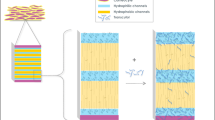Abstract
There are many excellent papers (Table 1) available in the pharmaceutical and dermatological literature concerning the complexities of transdermal drug delivery. With the recent explosion of knowledge in this field, authors have attempted to analyse and describe, in ever-greater scientific detail, the myriad of effects that govern the rate at which an endogenous molecule is able to leave a topically applied delivery vehicle, partition into the stratum corneum and diffuse through the barrier layers of the skin. Furthermore, complex mathematical models have been proposed that adequately describe this kinetic process for a number of permeants. The novice investigator, however, is often lost in this complex pile of journal reprints in which the authors presume that the readers are calculus fanatics or are able to mentally solve differential equations. Industrial formulators, too, seldom concern themselves with the exponential model of the permeation rate constants or the elucidation of the bipolar diffusional pathways using sophisticated analytical systems. These readers are often more concerned with the fundamentals of the drug delivery process: answering the “how can I make more drug diffuse through the skin?”question. Novice investigators often wish to conduct some form of systematic isolation and investigation of the various drug diffusion/delivery parameters by the use of in vitro permeation cell systems. It is with this readership in mind that we present here a no-frills, basic text on the fundamental aspects affecting the permeation of molecules through the skin or through any in vitro diffusion membrane.
Access this chapter
Tax calculation will be finalised at checkout
Purchases are for personal use only
Preview
Unable to display preview. Download preview PDF.
Similar content being viewed by others
References
Guy RH, Hadgraft J (1983) Physicochemical interpretation of the pharmacokinetics of percutaneous absorption. J Pharmacokinet Biopharm 11:189-203
Guy RH, Hadgraft J (1984) Prediction of drug disposition kinetics in skin and plasma following topical administration. J Pharm Sci 73:883-887
Potts RO, Guy RH (1992) Predicting skin permeability. Pharm Res 9:662-669
Cleek RL, Bunge AL (1993) A new method for estimating dermal absorption from chemical exposure: 2. general approach. Pharm Res 10:497-506
Bunge A, Cleek RL (1995) A new method for estimating dermal absorption from chemical exposure: 2. effect of molecular weight and octanol-water partioning. Pharm Res 12:88-95
Lien EJ, Gao H (1995) QSAR analysis of skin permeability of various drugs in man as compared to in vivo and in vitro studies in rodents. Pharm Res 12:583-587
Hori M, Ito Y (1995) Prediction of drug concentration in blood after topical application. In: Surber C, Eisner P, Bircher A (eds) Exogeneous dermatology: advances in skin-related allergology, bioengineering, pharmacology, and toxicology. (Current Problems in Dermatology, vol 22). Karger, Basel, pp 146-151
Potts RO, Guy RH (1995) A predictive algorithm for skin permeability: the effects of molecular size and hydrogen bond activity. Pharm Res 12:1628-1633
Wilschut A, ten-Berge WF, Robinson PJ, McKone TE (1995) Estimating skin permeation. The validation of five mathematical skin permeation models. Chemosphere 30:1275-1296
Heisig M, Lieckfeldt R, Wittum G, Mazurkevich G, Lee G (1996) Non steady-state descriptions of drug permeation through stratum corneum. I. The biphasic brick-and-mortar model. Pharm Res 13:421-426
Johnson ME, Blankschtein D, Langer R (1997) Evaluation of solute permeation through the stratum corneum: lateral bilayer diffusion as the primary transport mechanism. J Pharm Sci 86:1162-1172
Editor information
Editors and Affiliations
Rights and permissions
Copyright information
© 2000 Springer-Verlag Berlin Heidelberg
About this chapter
Cite this chapter
Smith, E., Surber, C. (2000). The Absolute Fundamentals of Transdermal Permeation (Drug Delivery for Dummies). In: Gabard, B., Surber, C., Elsner, P., Treffel, P. (eds) Dermatopharmacology of Topical Preparations. Springer, Berlin, Heidelberg. https://doi.org/10.1007/978-3-642-57145-9_3
Download citation
DOI: https://doi.org/10.1007/978-3-642-57145-9_3
Publisher Name: Springer, Berlin, Heidelberg
Print ISBN: 978-3-642-62960-0
Online ISBN: 978-3-642-57145-9
eBook Packages: Springer Book Archive



